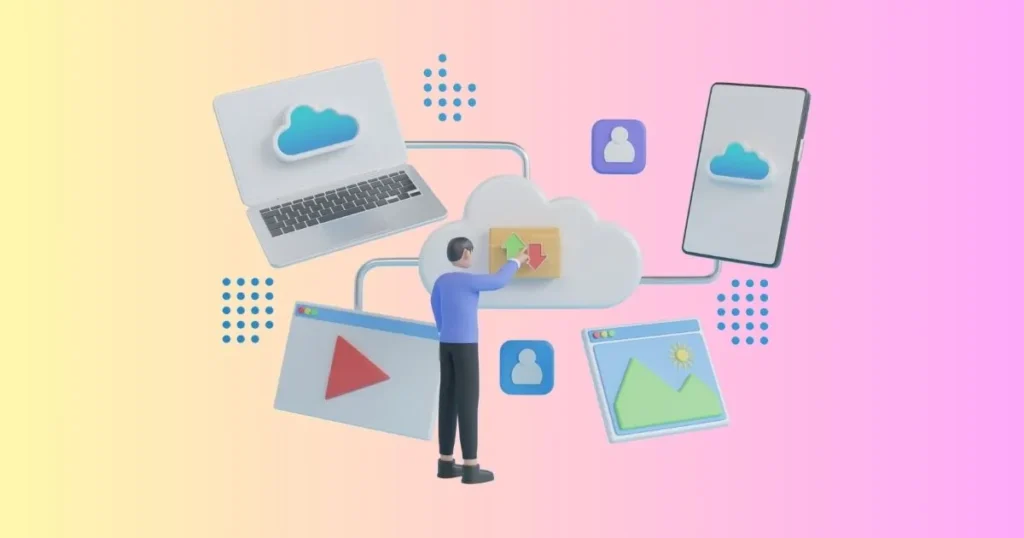Infrastructure as a Service (IaaS) have the highest level of control for customers. IaaS provides customers with access to virtual resources such as servers, storage and networks that they can use to build their own IT platform.
This allows customers to have complete control over the infrastructure, including operating systems, applications and development frameworks.
Introduction
Cloud computing has revolutionized the way businesses operate by providing on-demand access to a shared pool of configurable computing resources. It has enabled organizations to quickly scale their IT infrastructures while reducing costs and increasing efficiency.

One of the key advantages of cloud computing is that it offers varying levels of control for customers, depending on the type of service they choose. In this article, we will explore the different types of cloud computing and determine which one gives customers the highest level of control.
Related post: What is the most common type of cabling used for connecting computing devices?
Types of Cloud Computing
There are three main types of cloud computing: Software as a Service (SaaS), Platform as a Service (PaaS), and Infrastructure as a Service (IaaS). Each of these types offers different levels of control for customers, with IaaS being the one that provides the highest level of control.
Software as a Service (SaaS)
SaaS is a cloud computing model where applications are hosted and managed by a service provider and made available to customers over the internet. In this type of cloud computing, customers have the least amount of control as they only have access to the software and its features.
The service provider is responsible for managing the underlying infrastructure, including servers, storage, and networks. This means that customers do not have any control over the hardware or software infrastructure.
Platform as a Service (PaaS)
PaaS is a cloud computing model where customers can build, test, and deploy applications without having to worry about the underlying infrastructure. The service provider manages the operating system, servers, storage, and networking components required for running the application.
Customers have more control in this type of cloud computing than SaaS as they can choose which programming languages, tools, and development frameworks to use.
Infrastructure as a Service (IaaS)
IaaS is a cloud computing model where customers have access to virtual resources such as servers, storage and networks that they can use to build their own IT platform. In this type of cloud computing, the service provider is responsible for managing the underlying infrastructure, including hardware and software components.
However, customers have complete control over the infrastructure layer, allowing them to customize and configure it according to their specific needs. This includes the operating system, applications, and development frameworks.
Related article: What is a benefit of interference in quantum computing?
Advantages of IaaS
IaaS offers numerous advantages for customers, making it the most popular type of cloud computing in terms of control. Some of the key benefits include:
Flexibility and Scalability
One of the main advantages of IaaS is its flexibility and scalability. Customers have the freedom to choose which resources they need and can scale up or down as required. This allows them to adapt their IT infrastructure to meet changing business needs, without having to invest in costly hardware or software.
Cost-Effectiveness
IaaS is also cost-effective for customers as they only pay for the resources they use. They do not have to invest in expensive hardware or software, and maintenance and upgrades are taken care of by the service provider. This allows businesses to save on IT costs while still having complete control over their infrastructure.
Customizability
Another advantage of IaaS is its customizability. Customers have full control over the infrastructure layer, which means they can choose which operating system, applications, and development frameworks to use. This allows them to build a tailor-made IT platform that meets their specific needs and requirements.
Security and Control
IaaS also offers high levels of security and control for customers. They have complete control over their data, including where it is stored and how it is protected. This is especially important for businesses that deal with sensitive or confidential information as they can ensure that their data is secure and compliant with industry regulations.
Disaster Recovery
Disaster recovery is crucial for businesses, and IaaS can help with this. As the service provider manages the infrastructure, they are responsible for backing up data and ensuring it can be recovered in case of a disaster. This means that customers do not have to worry about managing their own backups, reducing the risk of data loss and downtime.
Conclusion
In conclusion, Infrastructure as a Service (IaaS) offers the highest level of control for customers compared to other types of cloud computing. It allows businesses to have complete control over their IT infrastructure, including operating systems, applications, and development frameworks. This gives them the flexibility, cost-effectiveness, customizability, security and disaster recovery they need to run their operations efficiently.
As the demand for scalable and cost-effective IT solutions continues to grow, more and more businesses are turning to IaaS as their preferred choice for cloud computing. With its numerous advantages, it is clear that IaaS will continue to play a crucial role in transforming the way organizations manage their IT infrastructure.
FAQs
In which cloud model do you have the least control over security?
The least control over security is in Software as a Service (SaaS) cloud model, as the service provider manages the underlying infrastructure and security measures. The level of control increases in Platform as a Service (PaaS) and Infrastructure as a Service (IaaS) models, with IaaS offering the highest level of control over security.
In which cloud service model users have control over the deployed applications?
Customers have control over the deployed applications in both Platform as a Service (PaaS) and Infrastructure as a Service (IaaS) cloud models. In PaaS, customers can choose which programming languages, tools, and development frameworks to use for their applications.
Which cloud computing model allows users to access applications over the internet without the need for installation or maintenance?
Software as a Service (SaaS) allows users to access applications over the internet without the need for installation or maintenance. The service provider is responsible for managing and maintaining the software, while customers only need to have access to the internet and a web browser to use the application.
What type of cloud service allows users to access software applications over the internet?
Software as a Service (SaaS) allows users to access software applications over the internet. This type of cloud service is often used for applications such as email, customer relationship management (CRM), and office productivity tools.
Since the service provider manages all aspects of the software, customers can simply log in and use the application without needing to install or maintain it on their own devices.





